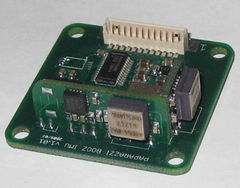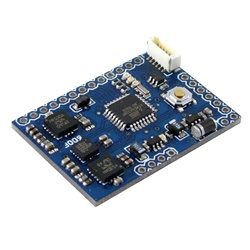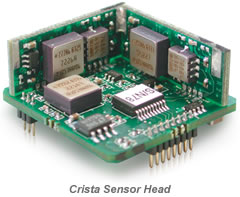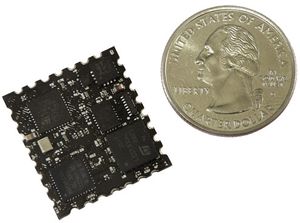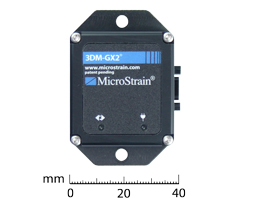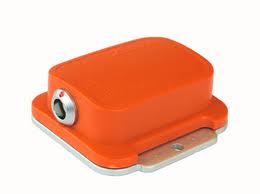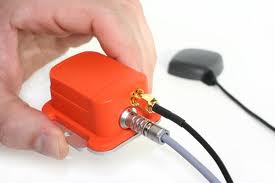Difference between revisions of "Inertial Measurement Units"
| Line 15: | Line 15: | ||
IMU's that can be used with a Paparazzi autopilot based UAS. If you happen to have such a devise, we really would love to see that you share your IMU paparazzi autopilot integration projects information on this Wiki. | IMU's that can be used with a Paparazzi autopilot based UAS. If you happen to have such a devise, we really would love to see that you share your IMU paparazzi autopilot integration projects information on this Wiki. | ||
=== SparkFun Razor IMU === | |||
[[Image:RazzorIMU.jpg|thumb|left|Razor IMU (top) with the tiny13 autopilot]] | |||
[[Image: | |||
[ | [[Image:RazzorIMUb.jpg|thumb|left|Razor IMU in the tiny13 autopilot box]] | ||
[http://www.sparkfun.com/commerce/product_info.php?products_id=10010 Official website] | |||
6DOF - Ultra-Thin IMU | |||
Very cheap, currently 62-72 Euro. [http://www.watterott.com/de/Sensoren/IMU Shop in Europe] | |||
[ | |||
Has been integrated in Paparazzi by Hochschule Bremen, Germany. | |||
Remove the high pass filters of the RazorIMU to get better results. | |||
For the Twog and Tiny 2.2 autopilots you have also remove the resistors to gnd of the 5V analgoue inputs. | |||
More infos are in the branch HB in the paparazzi SVN. | |||
[[Media:Wiring_Razor_IMU.pdf|Connections and wiring to the tiny13]] | |||
[[ | |||
<br style="clear:both"> | <br style="clear:both"> | ||
| Line 64: | Line 57: | ||
<br style="clear:both"> | <br style="clear:both"> | ||
=== | === Cloudcap Crista IMU === | ||
[[Image:crista_sensorhead.jpg|thumb|left|Christa IMU]] | |||
[http://www.cloudcaptech.com/crista_sensorhead.shtm Official website] | |||
More infos soon. | |||
<br style="clear:both"> | |||
=== Vector-Nav VN-100 === | |||
[[Image:VN-100.jpg|thumb|left|Vector-Nav VN-100]] | |||
[http://www.vectornav.com/vn-100-features Official website] | |||
More infos soon. | |||
<br style="clear:both"> | |||
[[Image: | === MicroStrain 3DM-GX2 === | ||
[[Image:3DM-GX2.jpg|thumb|left|MicroStrain 3DM-GX2]] | |||
[http://www. | [http://www.microstrain.com/3dm-gx2.aspx Official website] | ||
More info soon. | |||
<br style="clear:both"> | |||
=== Xsens MTi and MTi-G (with GPS) === | |||
[[Image:MTi.jpeg|thumb|left|Xsens MTi]] | |||
[[Image:MTi-G.jpeg|thumb|left|Xsens MTi-G (with GPS)]] | |||
[http://www.xsens.com/en/general/mti Official website MTi] | |||
[http://www.xsens.com/en/general/mti-g Official website MTi-G] | |||
More | More info soon. | ||
<br style="clear:both"> | <br style="clear:both"> | ||
Revision as of 15:10, 14 September 2010
Paparazzi Booz IMU
Work is underway to use Kalman code from the Booz project with the Tiny autopilots. The first IMU have been assembled and are being calibrated. Look for updates soon.
The IMU will communicate over SPI with the TWOG/Tiny2.11
The hardware description is here.
Available at PPZUAV.
3rd Party IMU
IMU's that can be used with a Paparazzi autopilot based UAS. If you happen to have such a devise, we really would love to see that you share your IMU paparazzi autopilot integration projects information on this Wiki.
SparkFun Razor IMU
6DOF - Ultra-Thin IMU
Very cheap, currently 62-72 Euro. Shop in Europe
Has been integrated in Paparazzi by Hochschule Bremen, Germany.
Remove the high pass filters of the RazorIMU to get better results.
For the Twog and Tiny 2.2 autopilots you have also remove the resistors to gnd of the 5V analgoue inputs.
More infos are in the branch HB in the paparazzi SVN.
Connections and wiring to the tiny13
ArduIMU
6DOF
Very cheap
Has been integrated in Paparazzi by ZHAW, Winterthur, Switzerland.
A magnetometer has been integrated in the software to compensate drift in yaw.
More infos soon.
Cloudcap Crista IMU
More infos soon.
More infos soon.
MicroStrain 3DM-GX2
More info soon.
Xsens MTi and MTi-G (with GPS)
More info soon.
The Very Short Essential Introduction To Inertial Attitude Estimation
The only physical entity related to attitude (pitch and roll) is the earth gravity vector (unless you use a multi-antenna phase-measuring GPS... $$$$). Unfortunately, the sensors that measure gravity (=accelerometers) also measure so-called kinematic accelerations or in other words: changes in speed: like centrifugal forces, Coriolis forces, linear accelerations etc... The sum of all these litteraly is "what you feel" and is called "specific force".
so
accelerometer_value (specific force) = earth_gravity + change in velocity (linear accelerations) + velocity times turn rate (centrifugal etc)
or
A = B + C + D
You measure A and want to know B. What all "gyroscopes and accelerometer only" AHRS projects are doing in some way or another is to neglect the last 2 (C and D). In many situations this is not bad: for instance: when testing the AHRS attached to your computer: it can not accelerate for a very long time (at most a few meters: so if you accerate to the left, then you need to accelerate to the right directly after so the average is zero) and can not rotate to much either (or your cable gets strangled). This is why all AHRS videos on youtube look perfect. And on the desk they are perfect: you neglected 2 terms in the equation that in that situation are perfectly neglect-able. Also with a quadrotor that hovers and keeps its nose in the same direction all the time, these neglected terms are small.
Now what about the gyroscopes you might ask. I deliberately keep them only second as gyroscopes (turn rate or rotation speed sensors) do NOT give you attitude but ONLY HELP TO SOLVE SHORT TERM errors in the previous part. If gyroscopes would measure turn-rate perfectly, then they would help more but all MEMS/PIEZZO sensors are more or less sensitive to 1) temperature, 2) turnrate, 3) vibrations, 4) accelerations, 5) radiation, 6) power supply quality 7) non-linearity 8) ADC-quality 9) dynamic range and saturation problems, ... so if you integrate gyroscopes, sooner or later errors build up (drift). I put this list here so you know what to pay attention for: if using gyroscopes: always try to keep the temperature as constant as possible or let the temperature settle, reduce vibrations (dampers), use better ADC (e.g. 10bit ADC with +/- 1200 deg/sec gyros have a resolution of 2.4 degrees/s per ADC tick, so your phi/theta might drift 1.2deg/sec without noticing) and power supply filtering and shielding etc to start with. All of these define for how long (seconds!/minutes?) gyroscope integration is useful.
If you convert the accelerometer directly to attitude and plot it, it will vibrate a lot and will show errors when you accelerate the AHRS on your desk. During a coordinated turn of a fixedwing plane, the force you feel is perpendicular to the plane (not pointing to earth). The accelerometer only clearly is insufficient to know your attitude. One solution is to use gyroscopes that are so good that you can predict for many minutes (then the average acceleration during several turns would still point to earth). But if your gyros can only help for shorter terms (like all MEMS sensors of less than 500euro/each) then extra information is required. E.g: if you add GPS data or airspeed data however, from the flightpath you can quite accurately reconstruct the missing C and D terms. Together with the accelerometer you can know "where the earth is" even when you keep accelerating and turning. Here questions like latency, update rate, noisy derivatives (linear acceleration) are of importance.
Finally there is the heading... GPS ground-track is not the same as nose direction. Gyroscopes measure how much the nose has been turning, so using GPS to correct it induces errors that increase with corsswind. Magnetometers can help here, and become necessary whenever you do not move enough anymore (hovering).
